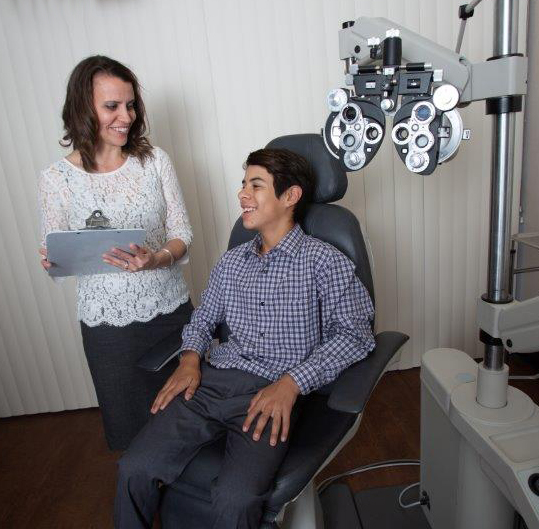Eye Muscle Strabismus (Crossed Eyes) Surgery
What is Strabismus?
Strabismus, or crossed eyes, is a misalignment of the eyes. The eyes are not lined up with each other and are unable to point at the same object together. The condition occurs in about 4% of children, and many adults suffer from it as well. Eye Muscle / Strabismus Surgery can alleviate this condition.
Sometimes incorrectly referred to as a lazy eye, strabismus is also known as:
- Crossed eyes
- Wandering eyes
- Wall-eyed
Types of Crossed Eyes
 Strabismus is classified according to the direction the eye is turned. The most common types of strabismus are:
Strabismus is classified according to the direction the eye is turned. The most common types of strabismus are:
- Inward turning, or esotropia
- Outward turning, or exotropia
- Upward turning, or hyperopia
- Downward turning, or hypotropia
What Causes Crossed Eyes?
Strabismus may be caused by the following:
- Congenital (present from birth)
- Eye injury
- Diabetes
- Tumor
- Retinal damage
- Farsightedness
- Stroke
- Cranial nerve palsy
- Other medical conditions

the symptoms of Strabismus
Strabismus may occur all the time or appear intermittently, usually when the person is tired, ill or concentrating on near vision objects. Symptoms of strabismus include:
- Loss of depth perception
- Double vision
- Loss of vision
How Is Strabismus Diagnosed?
After a thorough medical examination of the eye, the doctor will test for strabismus using the Hirschberg test to examine the reflection of light in each eye. If the eye is not properly aligned, the reflection will not be seen in the same place in each eye. Other diagnostic tests that may be performed include:
- Retinal exam
- Visual acuity exam
- Cover test
Treatment of Crossed Eyes
 The goal, in the treatment of strabismus, is to preserve vision. For children, early treatment is best, preferably before the age of six. Older patients can be helped as well; it’s never too late to seek treatment.
The goal, in the treatment of strabismus, is to preserve vision. For children, early treatment is best, preferably before the age of six. Older patients can be helped as well; it’s never too late to seek treatment.
Advanced cases of strabismus are treated with a combination of therapy, including:
- Prescription eyeglasses
- Vision therapy
- Eye Muscle / Strabismus Surgery
- Prism therapy
- BOTOX® injections
What are the risks of leaving crossed eyes untreated?
Strabismus may manifest at first as double vision. Without treatment, strabismus can lead to:
- Visual impairment
- Loss of binocular vision
- Blindness in the weaker eye
Eye Muscle / Strabismus Surgery
Lynn Eye Medical surgeons offer Eye Muscle / Strabismus Surgery at our two surgery centers: Lynn Eye Surgery Center in Thousand Oaks and Westlake Eye Surgery Center in Westlake Village. You can also call us at 805.495.0458 to get started!
Schedule a Consultation Today






